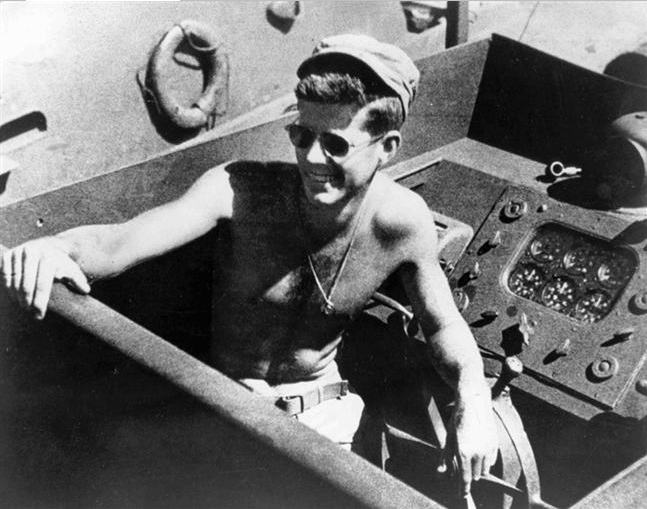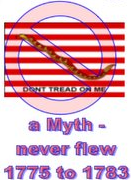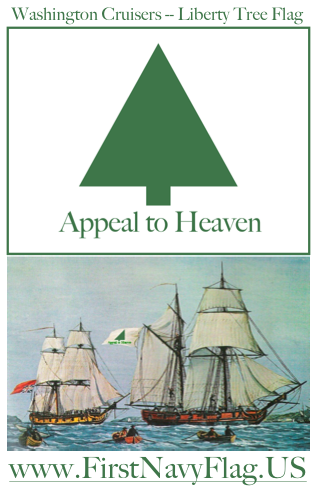
CLICK ON IMAGE to ENLARGE...
In early January, a Navy supply system officer provided the information that the Navy Snake Jack flag cost $46.80 each, more than the retail cost of $40 for the Liberty Tree First Navy Flag at the site below, and 55 Serpent Over Stripes flags were purchased as replacements from Navy ServMart in the past year.
Based on 3 Liberty Tree First Navy Flags per ship, and 300 Navy ships, with a fair discount for a volume purchase on the $40 cost of the Washington Cruiser - Liberty Tree flag available at: http://www.anyflag.com/history/washcru.htm would yield a cost to implement this wise change of Navy Jack flags as only around $29,210.
If our Navy does not want to afford this nominal sum, are there any private or corporate sponsors? If so, please, send me an email at the address above, or call and let’s talk. Thanks. -- JRM
P.S. Buy and fly your own Liberty Tree First Navy Flag, or buy 3 desk size (6x9 inch) Liberty Tree Flags, one for you, one for your Congressman, and one for the Secretary of the Navy, by clicking on the CLICK&PLEDGE button on the right.
Wednesday, February 22, 2006
True vs. False - First Navy Flag - Liberty Tree vs. Snake Over Stripes (Retreating Rattler)
Posted by
"George Washington" 'States'Manship
at
Wednesday, February 22, 2006
0
comments
![]()
![]()
Appeal To Heaven Liberty Tree First Navy Flag Washington Cruisers Flag 2 September 1775 and on...

22 February a.d. 2006 - The 274th Anniversary of the Birth of GW - George Washington.
The image of the Evergreen Tree of Liberty - Appeal To Heaven - First Navy Flag is as depicted by retired Naval Academy Band instructor Ron McGlanahan. The image of the first Continental ship, named Hannah is from page 13 of the Naval Historical Foundation "coffee table" book published in a.d. 2000, titled "THE NAVY" (shown below the Liberty Tree - true First Navy Flag).
The British National Maritime Museum sent a photocopy of the letter of the Navy Admiral telling of the design of the First Navy Flag, as is shown in the penmanship on the lower right. Letter received on 3 January a.d. 2006. The ship Lee is flying the Appeal To Heaven flag as it brings in its capture, the ship Lively, with much needed 30,000 shirts, stockings, and pairs of shoes.
Posted by
"George Washington" 'States'Manship
at
Wednesday, February 22, 2006
0
comments
![]()
![]()
Reply with images to errors of History in Deputy Director of Navy History letter of 23 Jan 2006

In response to the Deputy Director of Navy History words of justifying the Navy's historically erroneous dismissal of the Washington Cruisers as the first of the Continental Navy ships, the Captain writes "...Washington's fleet that operated in Massachusetts Bay..."
“You are to proceed as Commander… as may be found on the High Seas…”
How does the part of the order "on the High Seas" square with the Captain's letter, "in Massachusetts Bay..."?
From Washington’s Orders of 2 Sep 1775 to first Navy ship Captain, Nicholas Broughton.
p. 6, W.B.Clark G.Washington’s Navy
Also, remember Washington's Orders for the Hannah to proceed to Montreal to provide support to the campaign there, just a tad outside Massachusetts Bay.
In response to the words "...manned and officered entirely by the Continental Army."
p. 4 “An experienced sailing master, a master’s mate, and four seamen were hired at Beverly.”
p. 5 “The regiment was tapped for volunteers. Broughton’s company yielded but a dozen of the thirty-six privates selected.”
W.B.Clark G.Washington’s Navy
And the 24 April 1776 letter of GW to Hopkins asking for his 200 men to be returned that can be found at the University of Virginia George Washington Papers Project. Obviously, former Rhode Island Militia General Esek Hopkins, first Navy Commodore, or Navy Commander in Chief, used 200 men from Washington's Army, the same way Washington sought volunteers from the army to man the seven cruisers that he commissioned for the Continental Navy, all but the first of which were named for leaders of the Continental Congress, or the Continental cause, and all approved by the Continental Congress Navy Committee on its visit to Washington in October 1775, before Hopkins was named to head the Navy.
The First Navy Flag was before the (fictional) “Serpent” Flag now in use. Naval Historical Center site says the Serpent flag is questionable historically.Also shown on page 13 of THE NAVY published the Nav al Historical Foundation © 2000. The flag image shown center above is taken from American RevWar website maintained by a former music instructor at the Naval Academy, Ron McGlanahan. (http://www.americanrevwar.com/files/FLAG.HTM)
The frontispiece of the Volume 2 of the Naval Documents of The American Revolution shows George Washington (at top right); the date range given first is 3 September 1775 to 31 October 1775, the day after Commander-in-Chief Washington commissioned the Hannah with the flag above as shown on page 13 of THE NAVY published by The Naval Historical Foundation to the end of the month wherein the Navy was born (right center). On Page 441 and 442, the 13 October 1775 entry used to define the Navy’s birth begins with “A letter from Genl Washington, dated October 5th.
Do our Navy Leaders have the Courage to Serve the Truth, and Change the Flag?
W. I. S. E. : Washington Institute
for Statesmanship Education
To Educate on the Greatest Document of Statesmanship
in the History of Man … impact that transcends space & time!
“this Constitution for the United States of America”
Box 75, Mount Vernon, Virginia 22121
Statesmanship@WashingtonLIVES.us
757-392-1457
“Literary power and statesmanship were combined in George Washington,
The greatest political leader of his time and also the greatest intellectual and moral force of the Revolutionary period.”
– Noah Webster, a.d. 1828
Posted by
"George Washington" 'States'Manship
at
Wednesday, February 22, 2006
2
comments
![]()
![]()
Monday, February 20, 2006
Why does the Navy fly a false flag? Why a snake? A snake on its belly in retreat?

The old joke within the Navy is "200 years of Tradition unbounded by Progress", or some words to that effect.
But here with this flag, it is 200 years, more or less, of an historical fiction, grasped by well meaning officers for the Bicentennial in 1975, and now made a "Tradition" unbounded by Truth. In the flag journal, Raven, in Volume 11 of 2004, flag expert Peter Ansoff thoroughly researches the legend of the Navy Rattlesnake, "Don't Tread On Me" flag, and a summary of that article is provided below.
Notice that the Mexican flag central image is of an Eagle eating a Rattlesnake, and yet our current Navy Jack shows a Rattlesnake - On its Belly in Retreat - with the motto of a plaintive plea (Please) "Don't Tread On Me".
Saint Patrick of Ireland is famed for driving the snakes out of that country. And besides the long history of the evergreen Tree of Liberty on American flags, the flag of Lebanon shows a Cedar of Lebanon as a proud, upright, and strong central image.
Summary of "The First Navy Jack," by Peter Ansoff. It is published in Raven: A Journal of Vexillology, Vol. 11 (2004). (underline and bold added)
Page 2: “The First Navy Jack (Figure 1)” (Editor Note: Snake Over Stripes flag) “is a well-established part of American lore.” (Editor Note: More accurate than “well-established” would be to say “widely accepted” part of American lore.) … It has been an icon of the United States Navy since 1975-76, when all ships flew it to commemorate the bicentennial of the Navy and the United States…. The terrorist attacks of 11 September 2001 increased the popularity of the “rattlesnake and stripes” as a defiant symbol of national unity and resolve, both in the Navy and among the general public.”
“In fact, however, there is little evidence that his flag was flown by Commodore Hopkins in 1775, or that it even existed during the American Revolution.”
Page 9: Under the header “The Flags in the Thomas Hart Portrait”
“It appears that the naval historian Samuel Eliot Morison was correct when he made this comment: The mezzotint portrait of Esek Hopkins published in England… is a work of imagination by someone who never saw Hopkins or his ships… the flags are fantastic.”29
Page 10: “Third, 18th-century British and European illustrators often used the stretched-out “crawling rattlesnake” as a symbol of the American revolutionary cause, whereas there is no other known evidence that it was ever used on American flags.”35
Page 10: “In summary, the evidence strongly suggests that the striped rattlesnake flag depicted in the Hart engraving was not a realistic depiction of an American naval flag, any more than the palm tree in his Arnold portrait accurately depicted the flora of Canada.”
Page 12: “Nevertheless, the Hart image of Hopkins and its many descendants are standard illustrations in books and websites dealing with the Continental Navy and the Revolutionary War. 43 Generations of flag historians have assumed them to be authentic, and have built upon them a legend of the First Navy Jack –
an historic flag that never was.”
The legend of the Snake Over Stripes was step by step furthered by several books:
1830 Biography of John Paul Jones by Robert Sands
1839 History of the Navy of the United States of America by James Fenimore Cooper
1850 Pictorial Field-Book of the Revolution by Benson Lossing
1864 The History of our Flag by Ferdinand Sarmiento
1872 History of the Flag of the United States of America by RADM George Preble
1880 The Flag of the United States and Other National Flags by RADM George Preble
In his 1880 book Admiral Preble tried to correct his previous error in the 1872 book about the existence of the Snake Over Stripes flag. But the snake flag myth survived!
Page 20: Dr. Whitney Smith, founder and director of the Flag Research Center, has said of Preble’s work:
“…Original research is time-consuming and demanding and it’s easy to assume that published sources are correct and can be trusted. Those who have written books and articles or have created web sites about American flags have for the most part relied on work done by Preble. As a result there is a constant repetition of misinformation that gives certain designs the impression of accuracy.” 64
Posted by
"George Washington" 'States'Manship
at
Monday, February 20, 2006
0
comments
![]()
![]()
Monday, February 06, 2006
Happy Birthday President Reagan, His Words on Washington, First Navy Flag

Ronald Reagan said in a.d. 1982, "The most sublime picture in American History is of George Washington on his knees...". And what might General Washington been doing on his knees? Praying, or in the process of "Appeal To Heaven" for Liberty for America.
The image of George Washington in Prayer is a "National Treasure" that is displayed under the dome of the United States Capitol in the Members Prayer Room, in the Pentagon Chapel, in the Ship's Chapel on the USS George Washington CVN-73, in the Base Chapel at Fort Belvoir, 3 miles from George Washington's Mount Vernon, at the Bicentennial Chapel at Redstone Arsenal in Huntsville, Alabama, in many carvings, knit kneeling pads, and a rose window at the Washington Memorial Chapel in Valley Forge, Pennsylvania, and in the center of America's financial district, on Wall Street, on the Cornerstone of the Federal Building, at the spot where George Washington was inaugurated as the first President under this Constitution for the United States of America, now a spot just a few blocks from Ground Zero.
Posted by
"George Washington" 'States'Manship
at
Monday, February 06, 2006
0
comments
![]()
![]()









